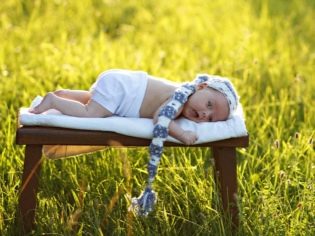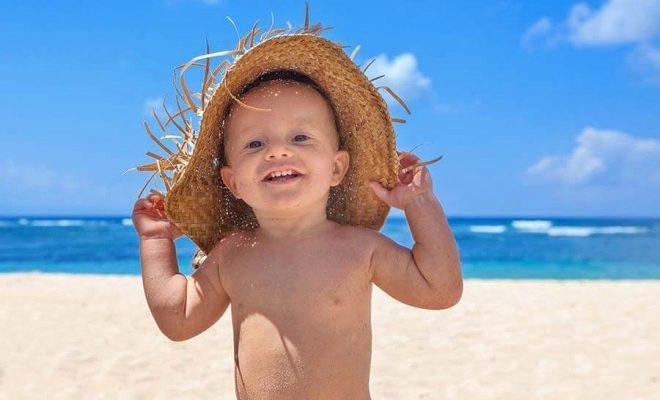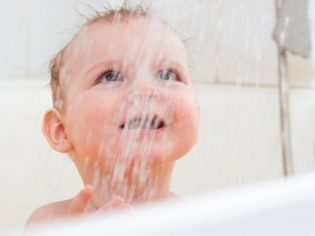Hardening of preschool children
The sooner the parents attend to the hardening of the child, the stronger his immunity will be to the beginning of the visit to the kindergarten, the school, which means that seasonal diseases will not be so terrible for the baby. Hardening of preschool children has its own characteristics, which we will consider in this article.
Why do you need it?
Hardening is known to mankind from time immemorial. This complex of physiotherapeutic effects using the possibilities of the environment: air, sun, water, temperatures, was appreciated by the doctors of antiquity. At the same time, medicine has not come up with anything new. Everything that hardening implies was created by nature, because people used to go without shoes, drank from natural sources, were not afraid of exposure to the sun and wind, and were much healthier.
The hardening system is an attempt of a modern person to come closer to the natural living conditions of the species to which he belongs. The gradual impact of external factors triggers a series of processes in the body, improving and mobilizing the work of organs and systems. Every child from birth has a great natural potential to resist diseases and threats from the outside, but parents usually ruin him in the bud, kutaya child, protecting them from drafts, using sterile dishes, nipples.
It is hardening that brings the body closer to natural conditions and trains the child’s immunity. The state of health improves, the metabolism becomes faster, the immunity is stronger, ready to give an adequate response to any threat in time. The blood vessels of a child who is hardened are in normal tone, which reduces the likelihood of developing heart and vascular ailments in the future, children start to get sick less often, and if they get sick, the diseases go quickly, without complications.
Hardening increases the adaptive abilities of the child, which would be an excellent help for major changes in life, for example, when you start school.
Types and methods
Hardening is traditional and unconventional (for example, winter swimming is included here). And the methods of preschool tempering are divided into special and non-special.
Non-special measures include everyday measures to create favorable conditions for the development of a child:
- useful parental habit of wearing a child for the weather;
- the creation of the correct microclimate in the apartment: the air temperature is about 21 degrees, the humidity is at least 50-60%.
But all rubdowns and douches already belong to special methods, and they can be practiced both in kindergarten and at home.
Consider what methods exist today.
Aerial
Exposure to air is considered the easiest way available for absolutely everyone. Hardening procedures can be started from it if there is no adequate experience at all, since air hardening will advantageously complement other methods.
Some special measures should not be taken, to draw up a plan of action and to paint the procedures on time is also not the best solution. Parents need to introduce air exposure into the child’s daily life:
- when dressing, leave the child naked for several minutes, do not rush to immediately dress him in other clothes;
- during morning exercises or gymnastics, take off your shirt;
- put the preschooler to sleep in a room that is pre-well ventilated;
- use indoor ventilation up to five times a day, even in winter;
- Every day, the child must walk in the street, and the longer they are, the better.
When lifting a child out of bed in the morning, take five minutes to charge, but make sure that the child’s room is not hot - for gymnastics, the optimum temperature is + 18 ° C. Gradually reduce it over several days by 1 degree, until the temperature reaches 12 degrees.
Encourage barefoot walking on the floor. In the summer - over grass, sand, soil. This will help not only in issues of hardening, but also in the formation of a correct arch of the foot, which will be a prevention of flatfoot and other orthopedic problems of the feet. There is no need to fear that walking barefoot will lead to a cold — the feet have a unique property for the human body to narrow, and therefore there is no loss of internal heat. It is quite another thing to sit on a cold surface, with colds it is very likely.
By introducing barefoot walking into a habit, one can gradually master particular walking methods, for example, through snow. To do this, first place the child with one foot on the snow, then the second. And only then can he stand on the snow with two feet. The procedure begins from 1 minute and adjusted in stages to 10 minutes.
Do not be afraid to get rid of excess clothing. While the baby is out of town in the summer, he can play without a shirt, and in early spring, when he plays outside, you can take off his jacket for a while and then put it back on.
Remember: the larger the area of skin-free skin, the more efficient air quenching will be.
Sunny
When exposed to skin, ultraviolet rays become a source of vitamin D, which the child needs for growth, metabolic processes, as well as for the nervous system and the formation of bone tissue. But it should be understood thatAbout the benefits of such hardening can be crossed out by harm, because sunlight is very intense effect on the body.
If a preschooler has no contraindications to stay in the sun, you should begin hardening by being in the shade, and only then expose the sun to separate parts of the body - first legs and arms. Sunbathing starts from 2-3 minutes and gradually adjusted to 10 minutes. When a tan appears on your skin, you can prolong your sun exposure.
Important! Sunbathing preschool children should at a time when the intensity of UV radiation is minimal - from 8 to 11 am, and after 16 hours. Do not forget about the headdress for the child - the panama should be made of light natural fabric, and you should always have a bottle of clean drinking water with you so that the child can drink at any time.
Water
Hardening with water is the most popular and effective hardening method for preschoolers. Water procedures activate immunity and help the child to better adapt. Procedures have a vasoconstrictor and vasodilating effect, train thermoregulation, in connection with which the child becomes less susceptible to factors of hypothermia, rarely gets sick.
Preschoolers parents must enter the mode of the day daily hand washing but it differs from the usual surface area and water temperature. You need to wash not only your hands, but also your shoulders, neck, upper chest. At first, use warm water, and then gradually reduce its temperature by 1 degree every day, and so on to 16-17 ° C.
Hardening of the oropharynx after eating cool water is very effective. Use for this boiled water cooled to 16 ° C.
Such a rinse will be very useful for preschool children, who often get sick, but parents of such children should understand that they need to lower the temperature of the water for the baby more slowly - not every day but four degrees every day. It should start with 35 degrees for any child. Rinses do not stop even with the disease, if your doctor does not mind. But for such rinses use water, which is a couple degrees higher than normal.
If before the child was not quenched, and only in 3-4 years they decided to start preparing his health for school days, begin water quenching. gradually, with rubdowns. They are carried out with cool water from the arms, neck, transferred to the body, legs. Be sure to rub the child after wiping with a hard towel to the skin a little red. Water temperature for rubdowns at the initial stage should be above 35 ° С, and then it is gradually reduced to 22 ° С in summer and 23-24 ° С in winter.
The next step in the tempering scheme are pouring. It is important not to hurry and follow the main recommendation - to do everything gradually. The first legs poured. In some nurseries and older kindergarten groups there are hardening specialists and exercise therapy, who carry out such procedures with the consent of the parents, provide advice, help to master the basic techniques.
To start dousing suitable water with a temperature of about 30 ° C, every week it is lowered by degrees, and gradually adjusted to 14 ° C.
Important: if the legs to the beginning of the procedure are cold, the goal will not be achieved, only warm feet are poured. Therefore, it is reasonable to carry out pouring after sleep. Then the feet are well rubbed with a hard towel.
Contrasting is the next step. And they also start with the feet. If the child is generally healthy, the contrast between warm and cold water can be from 14 to 32 ° C, if the baby is often sick and has weak immunity, the contrast should be less pronounced - 25-32 ° C. Body douches are carried out with water from 36 ° C, gradually reducing its temperature to 19 ° C. The first douche should last no more than 15 seconds.
The time of the water treatment can be gradually increased. The procedure for dousing is as follows: legs, arms, back, chest, abdomen and sides. After dousing, rub the child with a hard towel to redden the skin.
The child must swim: in the bath, in the ponds, in the pool. At the same time, you also need to follow the rules that state thatThe impact of water, air, the sun should be reasonable, phased, gradual.
Tips and tricks
When planning the hardening of a preschooler, it is important to know the basic rules and principles, which should be observed regardless of the chosen method of hardening.
- Before starting, be sure to consult with your pediatrician. Sunbathing has contraindications, for example, they can harm children with dermatological diseases, cancer problems, nevi, photoallergy. Exposure to cold is contraindicated in children with a cold form of allergy, and water procedures limit children with aqua genic allergic reaction.
- Any impact should be gradual, smooth, the time of the procedures increase little by little, the temperatures decrease too gradually. If it is difficult to draw up a plan of action right away, ask the doctor for help - he will give you a memo-table in which you can indicate the main stages of your recovery procedures.
- Hardening is not an achievement or an event. This is a daily and habitual way of life, which should become natural not only for the child, but also for the whole family. It will be strange if parents start demanding something from the baby that they don’t do.
- If the child is ill, tempering procedures cancel only for the time of high body temperature. After its normalization, hardening returns gradually.




















